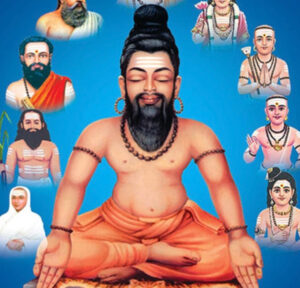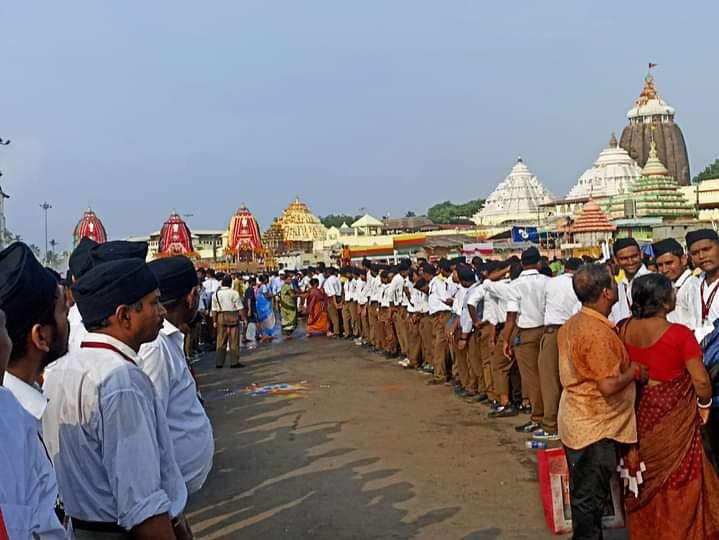
Today, to an average youngster, Yoga means a pack of simple ground exercises. These exercises known collectively as Hata yoga are only a part of a great science and art Yoga, one of the greatest contributions by Bharat to the world. To put it in perspective, yoga is made of Ashtanga yoga or ‘ an 8 limbs or steps course, to be learnt and practised all through one’s life. Yoga derived from the dhatu yuj means to unite. Yes, yoga unites the self- jivaatma (practitioner) with Higher Self or Paramaatmaa.
Whenever we talk of Yoga, we need to begin with Maharishi Patanjali. As Sage Vyasa classified and organised Vedas, Patanjali is celebrated as the pioneer of the science of yoga. He propounded the concept of Ashtanga Yoga. The eight limbs are Yamaa ( violence like 5 evils to be eschewed), Niyamaa (purity like 5 good practices to be adhered to), Aasanaa (postures , seating and movement), Praanaayaamaa (regulating the breath), Pratyaahaaraa ( overcoming the influences of sensory objects), Dhaaranaa(introspection) , Dhyaanaa (contemplation) and Samaadhi (trance).
Patanjali considered as an avatar (reincarnation) of Adi Sesha gave the profound concepts in simple one or two line formulae known as Sutras. He was a devotee of Lord Nataraja and he propagated the classical dance form and his Jeeeva Samadhi is said to be in Rameswaram.
Nandikeswara was the Guru from whom Patanjali learnt the art and science of yoga. There, Patanjali’s class mate was Tamil Saint Tirumoolar who is believed to have lived for over 3000 years and written 3000 quatrains ( four line poems) which are grouped together as Tirumandiram. His poems bear enough evidenceof how an yogi looks the life comprehensively and wholistically. One of them speaks his mind which reads “ earlier I was neglecting the body, later having realised the body as the abode of the Lord, took care of the body whereby gained longevity of life which aided my Sadhana and make spiritual progress “.(உடம்பினை முன்னம் இழுக்கென்று இருந்தேன் …பாடல் 725). He talks elaborately about Pranayaama, diet control, vasanas regulation and balance or moderation in pursuing worldly duties without attachment.
Tiruvalluvar’s Tirukkural is yet another literature which has captured the essence of the Indic values including the Vedic concepts and the practises followed by Rishis and Munis. Tiruvalluvar has written elaborately over several aspects of what Patanjali had prescribed as Ashtanga yoga such speaking the truth, following non-violence, not even entertaining the thought of coveting other’s possession, cutting the root of desire, leading a life celibacy and chastity so on and so forth. It will suffice o quote one Adhikaaram or Chapter on Medicine where he says a human being does not need any medicine if only he takes care of his eating habits, that is eating only when he is certain that his previous meal has been digested and hungry. (மருந்தென வேண்டாவாம் யாக்கைக்கு –குறள் 942). He also stresses upon maintaining the equilibrium of Pitta, Vadha and Kapha.
Avvayar is yet another Lady Poet who led an ascetic life at personal level and at the same time took care as a matriarch and provided succour to all who were in need. Her Athichudi and Konrai Vendan are primers one line capsules written in such simple sentences prescribing the do’s and dont’s for leading a righteous life. One of such sentences is சக்கர நெறி நில் which is generally interepreted as obey the orders of the government or King, also means follow the Dharmic Chakra or obey the Divine Order. Yet another sentence says ஙப் போல் வளை means train the body to be flexible. It is interesting to see the Tamil consonant ங resembles the third and eighth position in Surya Namaskar.
Thiruvarutprakasa Vallalār Chidambaram Ramalingam, ( Oct 5, 1823 – January 30 , 1874) is yet another Saint who by his speeches and works guided the disciples and the general public to lead a sattvic life. Jeeva Kaarunya or Ahimsa was the common refrain in his every work. He guided his disciples to follow vegetarianism. One of the volumes of Tiruarutpa focuses entirely upon the life style of a sattvic person such as right food, simple dress, purity in thought-word-deed, adequate rest etc.t
Finally, a few references from the writings of Mahakavi Subramaniya Bharati will be helpful to understand that how Yoga is current, relevant and useful to navigate successfully in the challenging present day world. Bharati says strengthen your body and keep it fit to achieve what you aspire ( உடலினை உறுதி செய் – புதிய ஆத்திச்சூடி or விசையுறு பந்தினைப்போல்-உள்ளம் வேண்டிய படிசெலும் உடல்கேட்டேன் – நல்லதோர் வீணை).. He repeatedly talks of mastering the senses to progress in spiritual path (பொறிகளின் மீது தனி அரசாணை or கடமையாவன தன்னைக் கட்டுதல் )
It is heartening to witness that this tradition of yogic way of life is being kept alive by several individuals (Nanammal, 103 years lady of Coimbatore who was awarded Padma Shri in 2018) and institutions like Krishnamacharya Yoga Mandiram or Esha Yoga.
M R Jambunaathan

